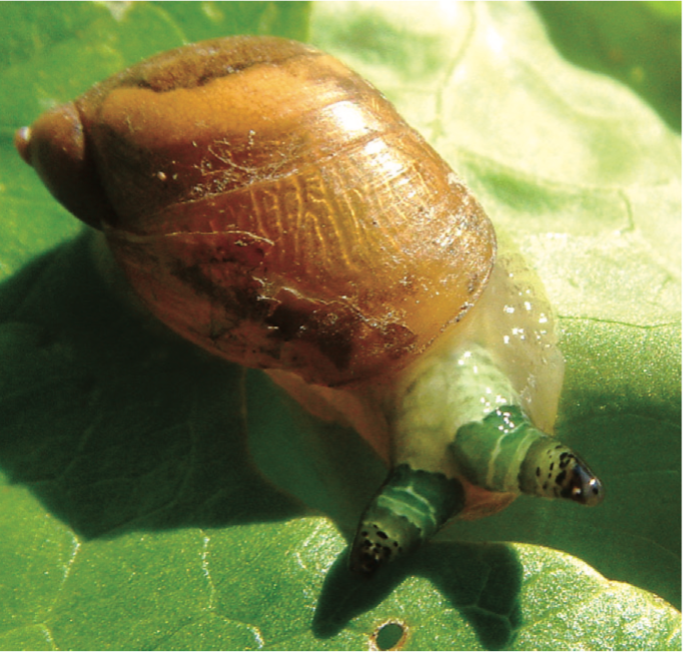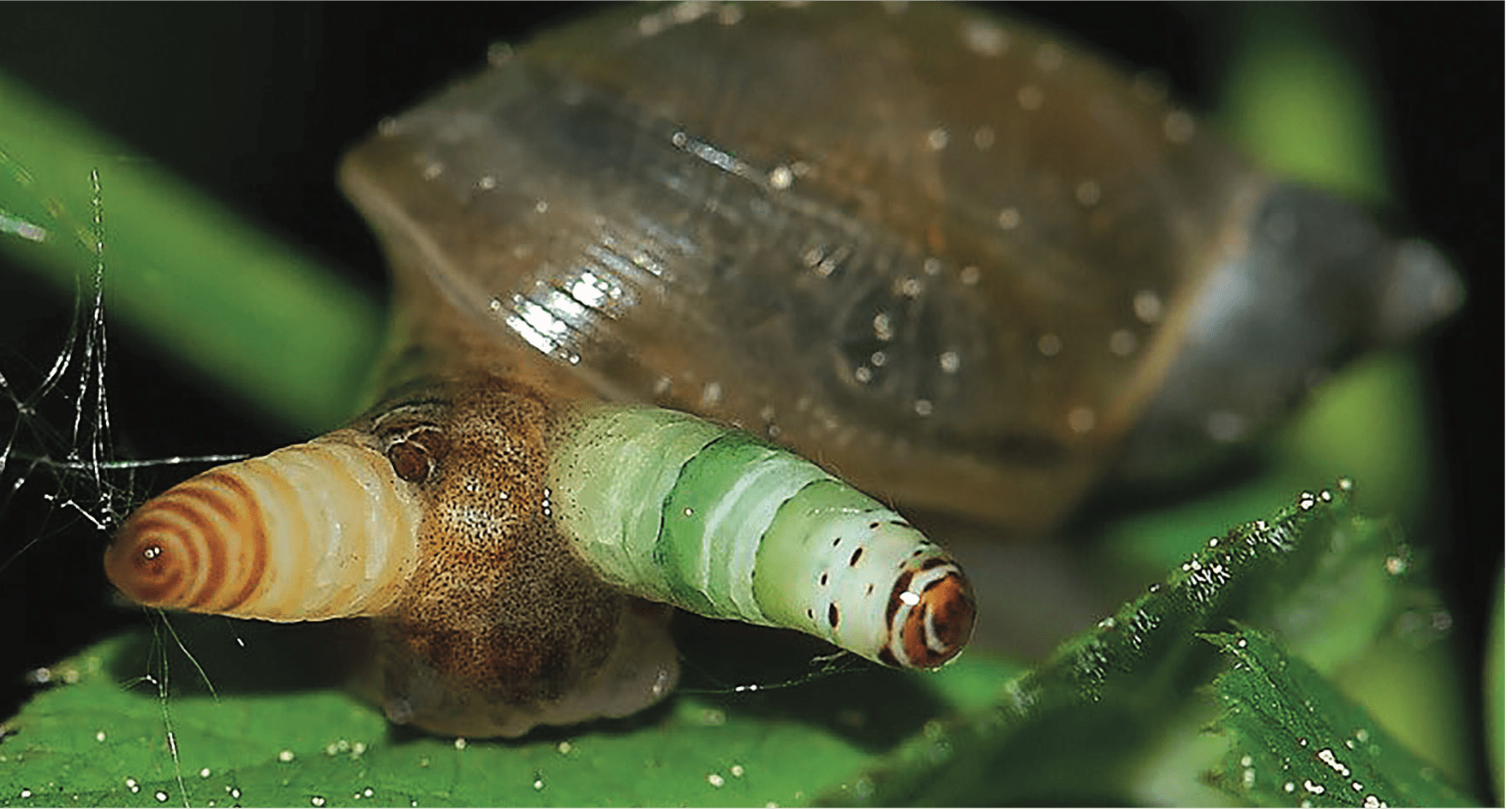Something sinister is growing inside this Snail’s body. These swollen eye stalks are an extension of a parasite called Leucochloridium who has a sneaky survival plan. But there’s more to this parasite than just a showy display.
Here’s a behind-the-scenes look into the pulsating parasite’s full plot.
STEP 1: GET EATEN BY A SNAIL
The first step of Leucochloridium’s journey is to be eaten by a Snail. Like many other parasites, Leucochloridium is picky and prefers to choose Amber Snails, named as such because of their almost see-through amber-colored shell.
Once in the Snail’s body, Leucochloridium makes its way to the liver, developing into a sporocyst and absorbing the Snail’s precious nutrients.
STEP 2: STEAL THE SNAIL’S ENERGY AND GROW STRONG
The sporocyst will need to grow strong before it can take full control of the Snail. They will continue stealing nutrients, even castrating their host to make sure that they hoard all they can possibly get to prepare for the next step in their dastardly plan, according to a 2014 article written by Matt Simon for Wired.
Once they’re ready, Leucochloridium will extend tentacles from the liver and grow a broodsac chock full of larvae in the Snail’s eyestalks.

It might make sense for parasites like Leucochloridium to steal as many nutrients from their host in order to grow stronger, but it’s critical for parasites to take only what they need to make sure their host is at least healthy enough to collect food for them.
STEP 3: USE MIND CONTROL TO TURN THE SNAIL INTO A PERSONAL ZOMBIE CHAUFFEUR
And, now we get to the exciting part!
Now that Leucochloridium’s worm- looking brood sacs start to pulsate into a delicious sign that screams “Bird Snacks,” the host Snail starts to act wildly different from their healthy Snail brethren. They start to move much faster (well, as fast a snail can go) and climb higher up than their usual forest undergrowth home, according to a 2013 article by Wanda Wesołowska and Tomasz Wesołowski published in the Journal of Zoology.
Not only that, but they also make sure to get up and about during daytime even if Snails are mostly nocturnal. Plus, they hang out on the well-lit tops of leaves to make sure they’re visible and easy to access.
Who could they be trying to attract?

Leucochloridium’s pulsations make the Snail look like a juicy Worm for insect-eating birds! Copying the look and movement of prey to attract a predator is an excellent example of aggressive mimicry.
But wait, why would this creature want to get eaten in the first place?
STEP 4: GET EATEN BY A BIRD

Wait, get eaten? Yes, this has been Leucochloridium’s endgame all this time. They need a bird to hop on over, pluck the eyes off of the Amber Snail, and eat the larvae-filled brood sac.
As a trematode or parasitic flatworm, Leucochloridium only fully matures in the intestines of its definitive host. In this case, it’s a bird. This is where the Leucochloridium reaches its adult stage in the gut of the bird, reproduces, and releases eggs for the bird to poop out.
Unlike other parasites that may infect more than two animals before reaching the adult stage, Leucochloridium has tactics that allow them to survive with just a couple of hosts: Amber Snails and Birds.

Host Snails can regrow their missing parts after being eaten by Birds, but they can become reinfected by Leucochloridium. Talk about being manipulative, but you have to hand it to these parasites for choosing such a strategic host!.
Smart move, Leucochloridium!
STEP 5: NOW, WE GO BACK TO THE SNAIL AND REPEAT THE CYCLE!
Now that a bird has helped spread Leucochloridium’s eggs far and wide, it’s time for the cycle to continue. An Amber Snail will accidentally eat the infected bird poop, turn into a hyperactive zombie, get their eyestalks eaten by a bird, and so on.
This zombie overlord may not be plotting world domination, but their story would surely sit in your head rent-free (unless you’re a Snail, of course, then they would prefer to stay specifically in your eye stalks).







